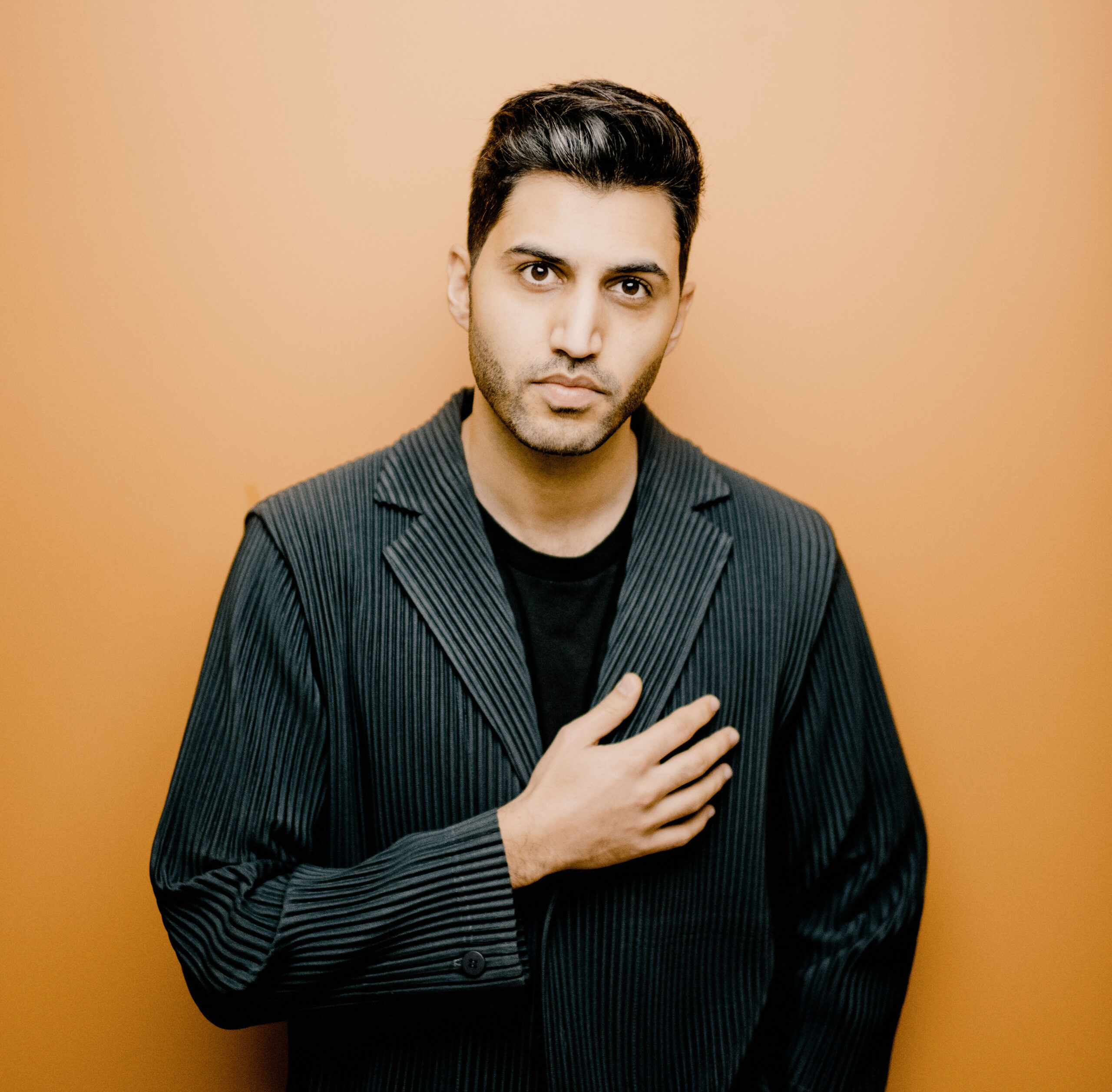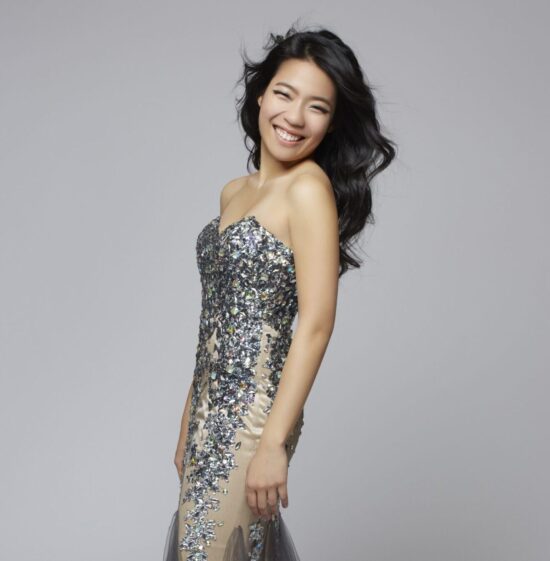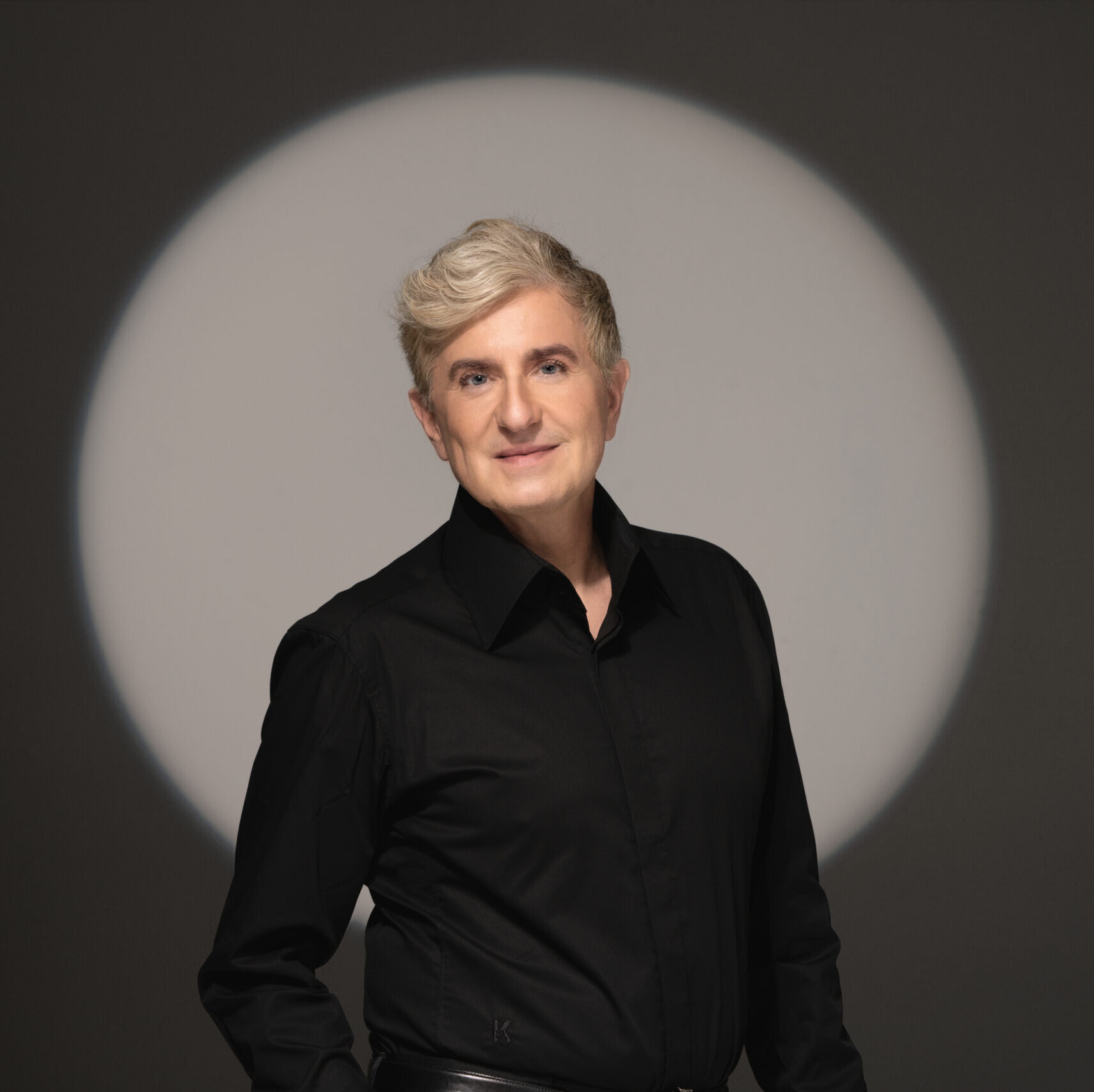Prokofiev and Sibelius (October 24-25, 2025)
Program
October 24-25, 2025
- Tabita Berglund, conductor
- Augustin Hadelich, violin
Harald Sæverud (1897-1992)
Kjempevise-slåtten: The Ballad of Revolt
Sergei Prokofiev (1891-1953)
- Violin Concerto No. 2 in G minor, Op. 63
- Allegro moderato
- Andante assai – Allegretto – Andante assai
- Allegro, ben marcato
Augustin Hadelich, violin
Intermission
Jean Sibelius (1865-1957)
- Symphony No. 2 in D major, Op. 43
- Allegretto
- Tempo andante, ma rubato
- Vivacissimo – Lento e suave –
- Finale (Allegro moderato)
From Dark to Light
This concert begins in darkness, with somber music that steals into your awareness—solitary voices emerging from different parts of the orchestra, foreshadowing the exhilarating music to come. This is musical scene-setting from a Norwegian composer responding to Nazi occupation during World War II. But it could represent any dark point in history. Unlike most “resistance music,” Harald Sæverud’s Kjempevise-slåtten has no lyrics. It’s an instrumental “ballad of revolt,” telling its story and creating its emotional effect through purely musical gestures.
Sergei Prokofiev’s second violin concerto is another example of music that “sings” without voices or words. It was written in 1935, at a time when Prokofiev was shaking off his youthful reputation for shocking listeners with “grotesquerie.” He doesn’t abandon his quirky wit entirely, but this concerto is remarkable for its translucent colors and lyrical grace—if you love his ballet score for Romeo and Juliet there’s much you’ll recognize. And there are melodies everywhere you turn—sometimes yearning, sometimes elegant, always irresistible. By the end, Prokofiev has taken us from the moodiness of his minor-key opening to a Russian’s vision of Spain.
Sibelius’s Symphony No. 2 also follows a “dark to light” journey— the impassioned melancholy of the first movement leads to a magnificently heroic finale. On the one hand, this musical trajectory is hardly surprising for a young composer trained in the symphonic tradition of Beethoven. On the other, Finland at the beginning of the 20th century was still a satellite of Imperial Russia, chafing under a lack of political and cultural autonomy, and more than a few of Sibelius’s Finnish contemporaries heard in the music an implied narrative of national liberation. And so we come full-circle, with creative works that burned brightly despite an overwhelming atmosphere of oppression, and a reminder that music’s power is political as well as emotional.
Kjempevise-slåtten:
The Ballad of Revolt
Harald Sæverud
Born 1897, Bergen, Norway
Died 1992, Bergen
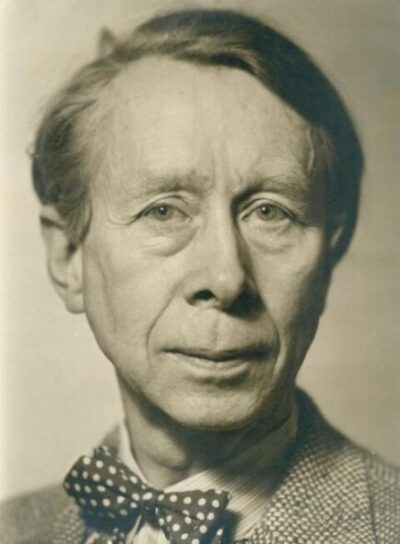
Kjempevise-slåtten begins with a “stopped” horn—nasal, as if choked. Another horn answers with the same five notes—quiet but open. Imagine the guarded exchange of passwords in the dead of night. Over the next two-and-a-half minutes, Sæverud sets the scene with dark- hued music, weaving threads of orchestral color: lamenting bassoons, shivering violas, ferocious oboes. Then the timpanist enters with a rhythm nearly everyone knows: the “da da da dum” of Beethoven’s Fifth.
In the 1940s, that rhythm was more than famous, it was a symbol of resistance for the Allied forces of World War II. (The pattern corresponds to the Morse code for “V” and Winston Churchill’s catchphrase, “V for Victory.”) Its presence in the introduction Sæverud added to the orchestral version of Kjempevise-slåtten is no accident.
Sæverud’s Norwegian title defies easy translation (“The Ballad of Revolt” is a subtitle), but it alludes to the West Norse heroic ballad (kjempevise) and to the folk dances of the Hardanger fiddle (slåtten). His dedication is clear: “To the Home Front’s warriors, big and small.”
This is resistance music, conceived in 1943 and written in direct, furious reaction to the Nazi occupiers. As Sæverud liked to tell it, he was enraged by the sight of the enemy soldiers’ barracks defacing the mountain slopes, and “spontaneously, as if I were swearing profusely, the music burst into my mind.”
In its original form, Kjempevise-slåtten was a piano piece. Unpublished until 1946, at first it was performed in house concerts and circulated privately. The end of hostilities triggered interest in the orchestral version: Sæverud received offers from Bergen, from Stockholm, even Moscow, for performances in the winter of 1945–46. Kjempevise-slåtten became a powerful symbol of Norwegian resistance.
The backstory, the titles, and the dedication are important, but the power of Kjempevise-slåtten is intrinsic to the music itself. Following the introduction, we arrive at the Marcia agitata section. A solo viola introduces the theme—folk-like but the composer’s own. She is answered by a solo violin. More voices emerge from the texture. Sæverud’s intent is for a gradual, relentless building of energy— increasing the number of instruments, the busy-ness of the texture, and our sensation of volume and speed. By the sixth appearance of the theme we hear the full orchestra; the seventh and final appearance calls for “extreme frenzy.”
It’s one long orchestral crescendo, often mentioned with Ravel’s Bolero and Grieg’s In the Hall of the Mountain King—to the composer’s delight. But Kjempevise-slåtten is also a musical analogy with resistance itself. Isolated fragments and ideas join in mutual strength. The simplicity of the theme and its insistent repetition conveys determination. And the call-and-response of instruments sharing the theme suggests collective identity established through dialogue. Our ears tell us what our minds and hearts know: we might be individuals, but united we can resist the enemy.
Yvonne Frindle © 2025
| First performance | As a piano piece in house concerts 1943–45; as an orchestral work in 1946 |
| First SLSO performance | These concerts |
| Instrumentation | 2 flutes, 2 oboes, 2 clarinets, 2 bassoons, 4 horns, 3 trumpets, 3 trombones, tuba, harp, timpani, percussion, strings |
| Approximate duration | 7 minutes |
Violin Concerto No. 2
Sergei Prokofiev
Born 1891, Sontsovka, Ukraine
Died 1953, Moscow, Russia
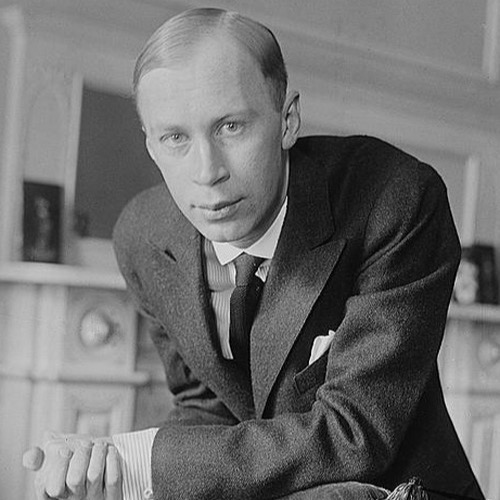
In 1933, after 15 years of composing and concertizing in the United States and Western Europe, Sergei Prokofiev returned to live in his native Russia. Although he maintained ties with the West for the next three years, he increasingly came to regard himself as a Soviet composer. Indeed, he would be fully and permanently repatriated by 1936. This was a happy and productive period for Prokofiev. In his homeland he found an enthusiasm for his music far beyond what he had known abroad, and he received substantial commissions for concert works, film scores, and ballets. Some of these—the music for the film Lieutenant Kijé and the ballet Romeo and Juliet, for example—would be among his most successful compositions.
There remained, however, one obligation dating from his 10-year residence in Paris: a work promised to the French violinist Robert Soetens. Originally the composer thought to fulfill this request with a sonata for violin and piano. But as the piece developed he decided a larger format was required, so he recast his sketches as a work for violin and orchestra.
Although written for a Western artist and audience, the Second Violin Concerto reveals the melodic warmth that emerged in Prokofiev’s music following his repatriation. There are, to be sure, some of the brittle textures, driving rhythms and touches of sardonic humor that had long marked his style, but these are now tempered by the almost Romantic lyricism that came to distinguish Prokofiev’s music after his return to Russia.
Like many composers at the time, although perhaps for different reasons, Prokofiev sought in the 1930s a more accessible idiom after some daring modernist experiments during the previous two decades. The Second Violin Concerto testifies to his success in achieving this without sacrificing his own compositional voice.
Formally, the work adheres closely to classical models. Its first movement (Allegro moderato) presents a straightforward sonata form, with statement, development, and reprise of two distinct themes. The first subject—a simple and beguiling melody—is announced at once by the soloist playing alone. The featured instrument also gives out the second theme, this time over a soft accompaniment from the orchestral strings. Prokofiev’s development of these two melodies is extensive and energetic, making considerable demands on the solo performer.
The second movement (Andante assai) is entirely different. After two measures of introduction—the orchestral violins plucking their strings—the violin enters with a beautiful cantabile theme, deceptive in its apparent simplicity. From this subject the entire movement unfolds in a nearly unbroken stream of melody, pausing only for a busy interlude (Allegretto).
The energetic finale (Allegro) follows a rondo pattern: a primary theme alternating with digressive episodes. The effect is of a Spanish-flavored waltz—listen for the castenets in the percussion; dance rhythms mark the recurring principal subject, and the solo part requires no small degree of virtuosity.
Adapted from a note by Paul Schiavo © 2013/2025
| First performance | December 1, 1935, with Robert Soetens as soloist and Enrique Fernández Arbós conducting the Madrid Symphony Orchestra |
| First SLSO performance | January 27, 1939, with Jascha Heifetz as soloist and Vladimir Golschmann conducting |
| Most recent SLSO performance | October 20, 2013, with Simone Lamsma as soloist and Hannu Lintu conducting |
| Instrumentation | solo violin; 2 flutes, 2 oboes, 2 bassoons, 2 horns, 2 trumpets, percussion, strings |
| Approximate duration | 27 minutes |
Symphony No. 2
Jean Sibelius
Born 1865, Hämeenlinna, Finland
Died 1957, Järvenpää, Finland
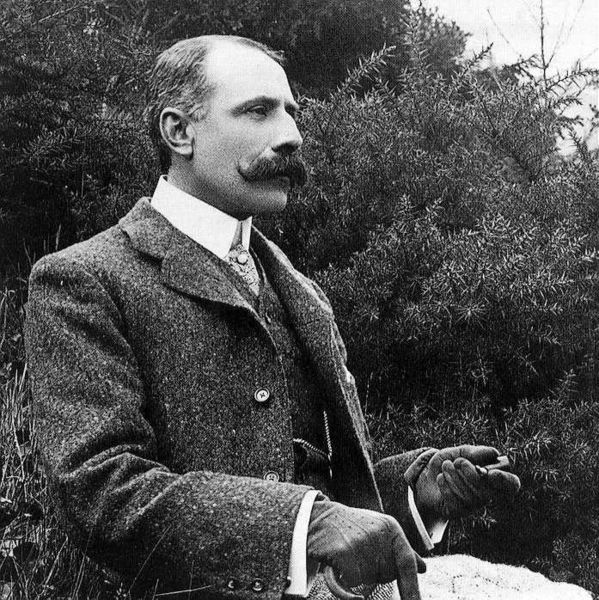
Changing musical tastes and perspectives can drastically affect the reputations of many musicians. Composers once held in high regard can fall into relative neglect, while others rise from comparative obscurity to respect and popularity. Among 20th-century composers, Jean Sibelius has, to some extent, done both. During his lifetime, Finland’s great symphonist enjoyed international acclaim amounting to adulation in certain quarters. During the 1920s and 1930s, some conservative musicians, bewildered by the compositions of Stravinsky and other advanced musical thinkers, even compared Sibelius to Beethoven and pointed to his work as the future of music. But following the composer’s death, in 1957, his star was partially eclipsed by the growing appreciation of the great modernist composers of the early 20th century, and the frequency with which his works were performed fell sharply.
Today, however, it is possible to view Sibelius in a more objective light, and the past four decades have seen a significant revival of interest in his music: new recorded cycles of the complete symphonies; increasingly frequent performances of his works by leading artists and orchestras; and praise from a new generation of composers. Many of the latter are symphonists representing the emergence of what has been labeled “the New Romanticism,” but Sibelius has also found admirers in the avant-garde. The late Morton Feldman, a composer of delicate, abstract music, publicly proclaimed his affection for the Finnish composer’s work. Another American composer, the post- minimalist John Adams, often programs and conducts Sibelius’s music together with his own compositions.
Sibelius’s ultimate place in the history of music will surely be as neither the savior his partisans hailed nor the reactionary formerly derided by his detractors. Rather, he may best be understood as a 19th-century composer whose hearty constitution allowed him to live and work well into the 20th. Instead of adopting the innovations of the modernist revolution, Sibelius remained true to his musical background, continuing to use the rich tonal language of the late-Romantic era to create a powerful and personal body of music.
Sibelius’s Second Symphony can serve to dispel two other misconceptions surrounding his work. Because the moods his compositions present often seem intensely subjective, a casual listener might easily assume their creation was guided by expressive rather than formal considerations. In fact, Sibelius achieved a remarkable mastery of tonal architecture. The Second Symphony reveals a four-movement structure in the classical mold: a strong opening of conventional design followed by a slow movement, scherzo, and triumphant finale. The conciseness of the work’s themes and their recurrence in succeeding movements provide further evidence of a concern for formal coherence.
Then there is the notion that Sibelius was a nationalist composer whose music consistently reflected the rugged landscapes, spirited people, and even the mythology and folk legends of his native Finland. Sibelius certainly drew inspiration from these sources at times, but he disavowed any extra-musical meaning, Finnish or otherwise, in his symphonic work. “My symphonies are music conceived and worked out in terms of music and with no literary basis,” he declared in an interview. He was particularly irritated by attempts to explain his Second Symphony in terms of a patriotic scenario. We can note, moreover, that he composed this work not by some Nordic fjord but, for the most part, during a visit to Italy during the early months of 1901.
The symphony opens with eight measures of throbbing chords. These function as a motivic thread binding the first movement: they accompany both the pastoral first theme, announced by the oboes and clarinets (and echoed by the horns), and a contrasting second theme consisting of a sustained high note followed by a sudden descent. The latter merits careful attention, since it will appear in several transformations later in the work.
A drum roll announces the second movement. Sibelius sketched the initial theme for this part of the symphony while considering writing a tone poem on the Don Juan legend, and much of the music that follows has an intensely dramatic character that seems suited to that story. Some of the most stirring moments involve variations of the second theme of the preceding movement.
Distant echoes of the series of chords that opened the symphony can be heard throughout the scherzo that constitutes the third movement: in the repeated notes that start both the violin runs at the beginning of the movement and the limpid oboe melody later on, as well as in the trombone chords that punctuate the heroic theme that appears near the movement’s end. This latter passage leads without pause into the last movement, which begins modestly but builds to one of the most exultant finales in the symphonic literature.
Adapted from a note by Paul Schiavo © 2014
| First performance | March 8, 1902, the composer conducting the Helsinki Philharmonic Orchestra |
| First SLSO performance | November 8, 1910, Max Zach conducting |
| Most recent SLSO performance | January 29, 2023, Stéphane Denève conducting |
| Instrumentation | 2 flutes, 2 oboes, 2 clarinets, 2 bassoons, 4 horns, 3 trumpets, 3 trombones, tuba, timpani, strings |
| Approximate duration | 46 minutes |
Artists
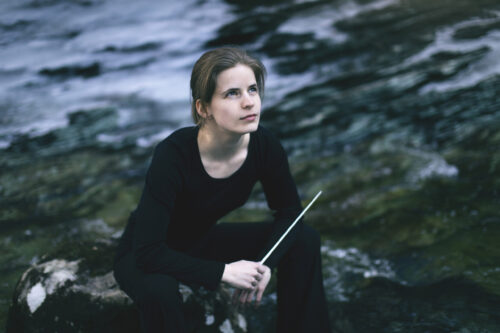
Tabita Berglund
With a charismatic style that combines elegance, verve, and precision, Tabita Berglund collaborates with leading orchestras and soloists worldwide, and she is Principal Guest Conductor of both the Detroit Symphony Orchestra and Dresdner Philharmonie. She studied at the Norwegian Academy of Music, first cello with Truls Mørk and later orchestral conducting with Ole Kristian Ruud. She played with the Oslo and Bergen philharmonic orchestras and the Trondheim Soloists before conducting became her focus. Her first titled position was Principal Guest Conductor of the Kristiansand Symphony Orchestra (2021–2024).
Her programming reflects the breadth of her repertoire interests, which range from Mozart and Schubert to Tchaikovsky, Scriabin, Mahler, Schoenberg, Bartók, and Lutosławski. She also champions her Nordic compatriots such as Thorvaldsdottir, Sibelius, and Irgens-Jensen.
In addition to the SLSO, notable debut appearances in 2025/26 include the Deutsches Symphonie-Orchester Berlin, Staatskapelle Berlin, Cincinnati Symphony Orchestra, Frankfurt Radio Symphony, NDR Elbphilharmonie Orchester, and Sydney and Melbourne symphony orchestras. In the US, she also returns to the Dallas Symphony Orchestra and will conduct a two-week Northern Lights Festival in Detroit.
Recent engagements include the Los Angeles Philharmonic, Minnesota Orchestra, Houston Symphony, Tokyo Metropolitan Symphony Orchestra, Bamberg Symphony, Gürzenich-Orchester Köln, Royal Stockholm Philharmonic Orchestra, Philharmonia Orchestra, Orchestre de chambre de Paris, Polish National Radio Symphony Orchestra, and Iceland Symphony Orchestra. Festival appearances have included Festival Internacional de Música y Danza de Granada and Grafenegg, while recent stage productions include Le nozze di Figaro (Garsington Opera) and The Nutcracker (Norwegian National Opera and Ballet). Her debut recording, with the Oslo Philharmonic and violinist Sonoko Miriam Welde performing the Bruch and Barber concertos, was nominated for a Norwegian Grammy (Spellemann) in the 2022 Classical Music category.
Augustin Hadelich
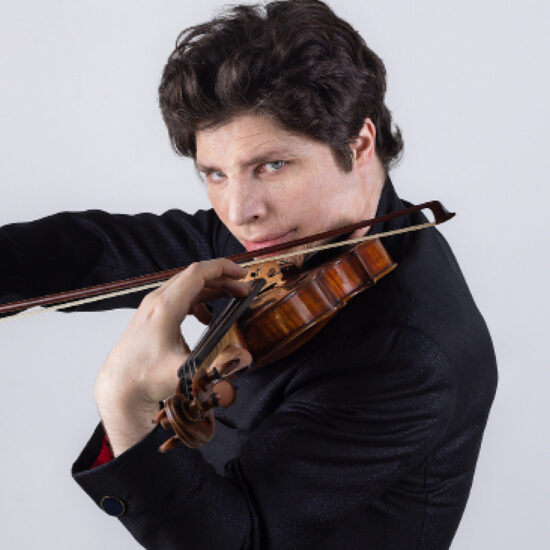
Augustin Hadelich is known for his phenomenal technique, insightful and persuasive interpretations, and ravishing tone. Appearing on the world’s foremost concert stages, he has performed with all the major American orchestras as well as the Berlin, Vienna, and London philharmonic orchestras, Royal Concertgebouw Orchestra, and Bavarian Radio Symphony Orchestra, and he is a regular guest of the SLSO.
In the 2025 summer festival season, he appeared with the Boston Symphony Orchestra (Tanglewood), Mahler Chamber Orchestra (Enescu Festival), and Orchestre de Paris (Lucerne), and performed in the BBC Proms, Aspen Music Festival, and Grant Park Music Festival. This season he is Artist in Residence with the Boston Symphony Orchestra and will also appear with the Cleveland Orchestra, Chicago Symphony Orchestra, New York Philharmonic, Philadelphia Orchestra, Pittsburgh Symphony Orchestra, Houston Symphony, San Diego Symphony, New World Symphony, and the National Arts Centre Orchestra in Ottawa, as well as leading orchestras throughout Europe.
His latest recording, American Road Trip with pianist Orion Weiss, was named Chamber Music Recording of the Year in the 2025 Opus Klassik awards. Other recordings include the Brahms and Ligeti concertos, the Spanish-themed Recuerdos, Paganini’s 24 Caprices, and two Grammy-nominated releases: the Dvořák concerto (Bavarian Radio Symphony Orchestra) and the Bach Sonatas and Partitas. In 2016, he won a Grammy for his recording of Dutilleux’s L’Arbre des songes (Seattle Symphony).
An American German citizen born in Italy to German parents, Augustin Hadelich rose to fame when he won the Gold Medal at the 2006 International Violin Competition of Indianapolis. He subsequently received an Avery Fisher Career Grant (2009), a Borletti-Buitoni Trust Fellowship (2011), and an honorary doctorate from the University of Exeter, UK (2017), and in 2018, he was named Instrumentalist of the Year by Musical America. He is a graduate of the Juilliard School, and a member of the Yale School of Music violin faculty. He plays a 1744 violin by Giuseppe Guarneri del Gesù, ‘Leduc, ex Szeryng’, on loan from the Tarisio Trust.
